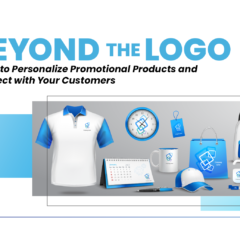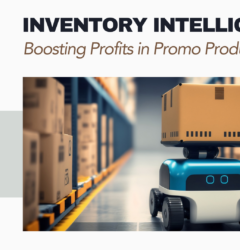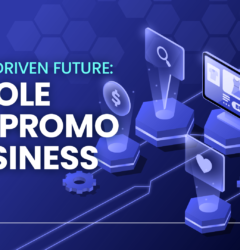15 Nov

What is API integration?
The process of automating communication and interaction between two or more interfaces is known as API integration. It enables processes across multiple high-performing companies to improve productivity, synchronize data, and increase profits.
When you use a single application on your mobile device like Airbnb, it connects to the internet and transfers data to a server. The server then retrieves this info, interprets it, executes the necessary actions, and returns it to your smartphone. The application then interprets this data and displays the details you are looking for in an easily readable format. All of this happens through an API.
Straightforward real-world comparison
Consider yourself seated at a restaurant table and deciding to order something from the menu. The kitchen is an integral part of the “system” responsible for preparing your order. What is lacking is the critical link between placing your order and having your food returned to the table. This is where the waiter enters the image. A waiter is an application programming interface (API) that acknowledges your request or order and directs the kitchen about what to do (the kitchen is the system). The waiter soon returns with your order; in this situation, it is food. Success!
Integration and APIs are two sides of the same coin, and without them, digital transformation is impossible
APIs are a must-have in today’s technological world for the modern IT industry; that’s why integration and APIs have risen to the top of the priority list for digital strategy plans for 2021.
Why API integration became a key factor in 2021
Organizations that had invested in digitalization were the ones that were agile enough to pivot and succeed in 2020.
The priority areas and technology investment areas for 2021 are improving the use of SaaS for workload administration and increasing hybrid cloud deployments, both of which require the use of APIs.
There are now over 23,500 APIs available, with more on the way.
Primary Benefits
-
Automation – APIs enable data to be transferred between applications more quickly and automatically. Previously, data transfers were performed by a salaried employee. This was taking a lot of time, depending on the amount of the data. Now, it takes a fraction of a second with API integration and requires no employee involvement at all.
-
Expand – Integrations with other applications or software extend the capabilities of your system. You can benefit from the tools you don’t own and do more by connecting with pre-built tools or broader applications. For instance, if you lack a dedicated tool for money processing, you can leverage APIs to integrate with existing apps and use them as your own.
-
100% accuracy – Processing of data handled by humans causes an extremely high probability of errors. When data is complex and overwhelming, the number of inaccuracies increases. Computers don’t get tired, don’t make mistakes, or don’t have bad days. They are as precise as they are programmed to be and are capable of 100% accuracy.
- Reporting – If your data is transferred through your apps, it’s far simpler to generate comprehensive reports that include all available data sets. Effective reporting enables pattern recognition and improved business decisions.
Generally speaking, software administrators and analysts understand how integration benefits the company. Internal process audits and simple cost analyses can quickly provide you with all the evidence you need to support the integration.
With all these benefits and more, it is not a matter of whether APIs are required; instead, it is a matter of how many, how they will be developed and used, and where to begin.
The Process
Regardless of the tool used to execute the API, developers must follow a standard protocol. The majority of the API integration phase starts with establishing workflow goals and identifying the source of the problem. To address identified issues, developers create solutions, which could involve combining two or three technological platforms.
After defining the objectives and doing a cost estimate, the development and consultancy teams create a tailored framework that integrates platforms and APIs to fulfill the client’s requirements.
Following the production phase, research may continue to determine if the product is working as intended.
Two ways of API ıntegration
Today, there are various methods for integrating APIs, and the best one depends on your business requirements. Developers should focus on creating customized solutions and treating each business and challenge individually. When it comes to finding the best solution for each business, there are two main options to start from: using APIs as a SaaS cloud service or having a Custom API Developed.
Custom-Developed integrations
Custom API development projects are similar to other types of production and design projects. Building an API and accessing data and methods contained deep within the program is a complex task. To connect to these interfaces and make use of the data received, developers must use various methods.
Therefore, specialized knowledge in integrating, developing, and customizing third-party APIs is required to help customers achieve their business objectives.
The developer team should provide high-quality API Development Services to create functional, flexible, and stable applications that utilize all API features.
APIs as Saas cloud service
Pre-built APIs, like custom integrations, are popular today because there is less reason to write each integration application for each business manually. These APIs and API platforms are easily accessible and ready to use.
API integration platforms are typically SaaS applications that specialize in managing and developing API integrations that connect other SaaS applications and databases. These apps are made for mass production and usually combine two different software platforms. These platforms demonstrate how important API integration has become in recent years. As a result, the use of “connector apps.” increased.
The range of provided pre-built APIs and the team’s network is just as important as knowledge and skills in this scenario. It’s an added benefit if the company which you’re working with is a partner with industry leaders. Also, because these APIs are designed for the masses, you must ensure that they meet your business requirements. If not, the developer team should develop options to combine different APIs to create ultimate solutions for you.
In both scenarios, delivering what is promised and creating tailored solutions for specific needs are necessary.
Still, not all developers have knowledge and experience in doing this for API integrations. Making the wrong decision can cost you both time and money. It is critical to select the right team to ensure that this option is profitable.
Summary
As technology and the number of applications and functions grew, it became necessary to optimize this process. And that need has been met in the form of API integration tools. There is no doubt that APIs are the easiest and most efficient way of enhancing the workflow, but not every API solves every challenge. The important thing is providing various APIs and understanding the needs of businesses, and customizing the API integration to fill those needs.
Working with the best team is critical to leverage APIs and determine the best path for your business.
We suggest that you schedule a free consultation with us today to talk about the next steps and the ultimate solution for your unique needs…
Related Post
Recent Posts
Archives
- March 2025
- February 2025
- January 2025
- December 2024
- November 2024
- October 2024
- September 2024
- August 2024
- July 2024
- June 2024
- May 2024
- April 2024
- March 2024
- February 2024
- January 2024
- December 2023
- November 2023
- October 2023
- September 2023
- August 2023
- July 2023
- June 2023
- May 2023
- April 2023
- March 2023
- February 2023
- January 2023
- November 2022
- August 2022
- June 2022
- April 2022
- March 2022
- February 2022
- November 2021
- October 2021
- September 2021
- July 2021
Request a FREE consultation
We’d love to hear from you

From concept to creation, we turn visions into working software


Copyright © 2024. All rights reserved.
Follow Us
Email: sales@webservicespros.com
Phone: (888)-977-4540
















